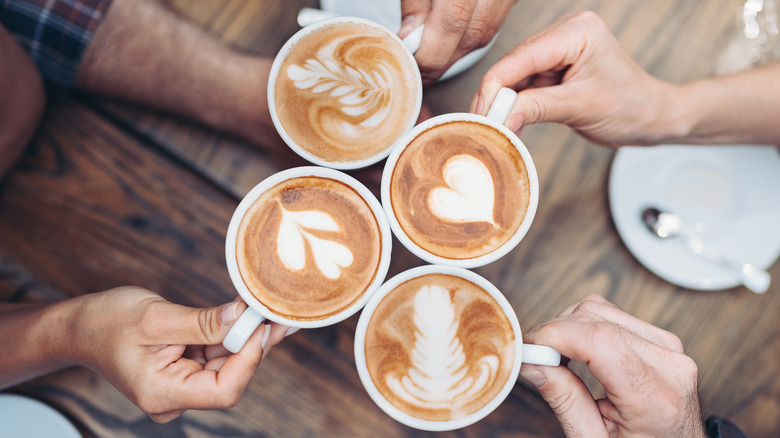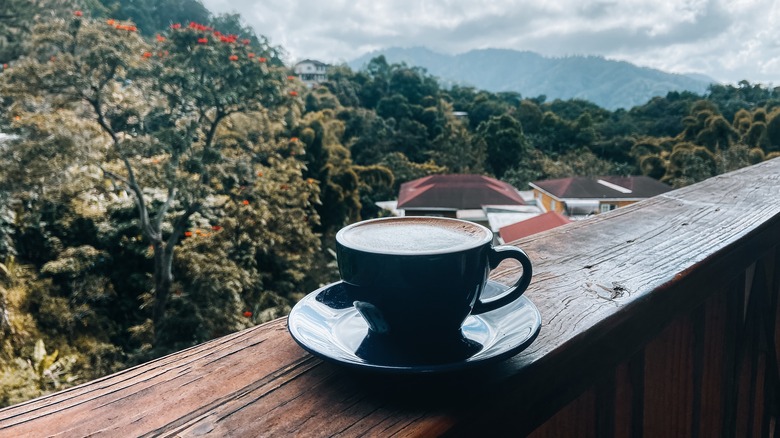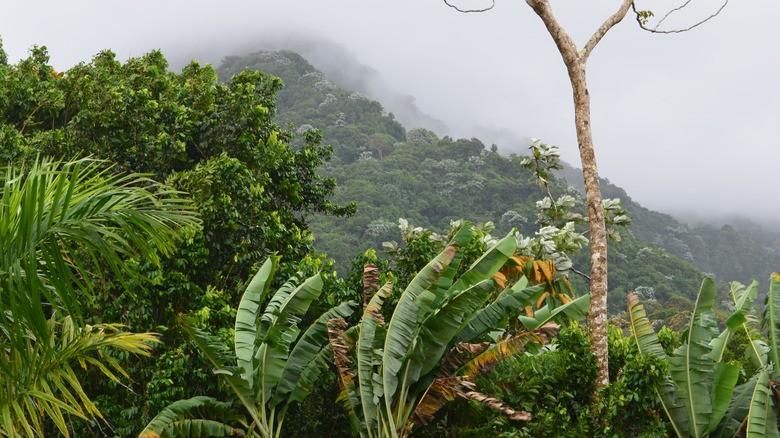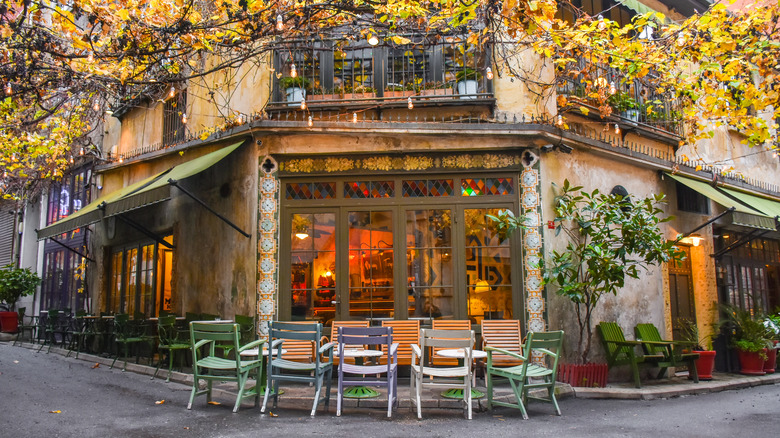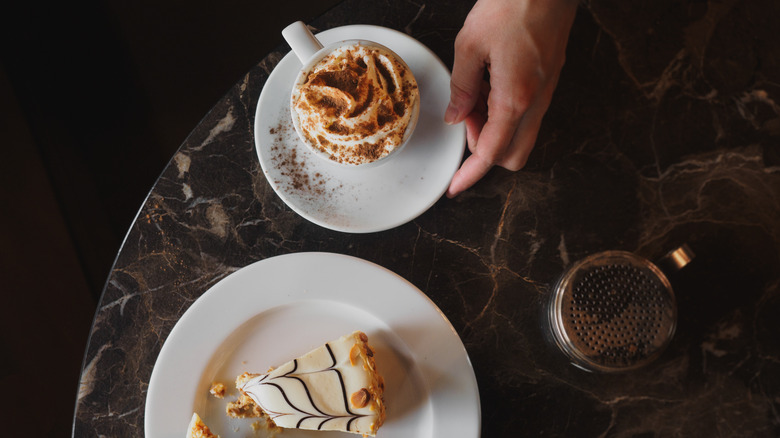The Most Gorgeous Vacation Destination Famous For Their Coffee
The art of crafting a perfect cup of coffee has moved far beyond the days of instant espresso or a simple coffee pot and has developed into a cross-cultural sensation. From French press and pour-over to Aeropress, cafes in every city are experimenting with new, inventive techniques to achieve a brew that's nothing short of perfection in both taste and quality. With a rapidly evolving coffee industry, the golden standard of what constitutes a "quality cup of coffee" has shifted, demanding baristas and coffee artists to elevate their roasting methods behind the bar.
At the heart of every good and perfect cup of coffee is a quality coffee bean. Mastering the intricacy of latte art or discovering the perfect proportion of crema adds a nice flair to the final product, but these finishing touches mean nothing if it lacks a premium base. In the competing realm of craft coffee houses, many cafes source their beans from the world's top coffee bean-producing regions. Countries in Central America and the Caribbean especially, are experts when it comes to catering to the world's elevating coffee standards. Don't be surprised if you find your go-to coffee bean brand is imported from one of these iconic countries, known for their coffee. A visit to these region's flourishing coffee plantations not only guarantees a quality cup of coffee but allows visitors to gain a behind-the-scenes perspective of what exactly makes their morning latte a coveted obsession.
Jamaica's secret to coffee roasting rests in the mountains
There's a reason Jamaica Blue Mountain Coffee is "The Most Sought After Coffee in the World." Rocky Road fans will love the balanced chocolate and nutty flavor profile of Jamaica's Arabica beans. Located along the Bean Belt (yes, it's a real thing!), the beans are grown on Jamaica's Blue Mountain Peak at an elevation of 7,400 feet. An easily overlooked factor, elevation is a critical element to consider when growing coffee beans. The ideal elevation for coffee plantations lies between 2,000-6,500 feet, with higher altitudes producing a denser bean and a more pronounced flavor profile.
Diverse microclimates, shaded forests, and soil composition create a near-perfect environment for the production of coffee beans in Jamaica. We've all heard the saying "Good things come to those who wait." Roll your eyes if you want to but if certainty holds true for Jamaican coffee. Large amounts of phosphorus and nitrogen in the soil blend, coupled with canopies of shade slow the production process and result in a deeper and more compelling flavor. Sip this celebrated product in its native origin by visiting the Craighton Estate, nestled in the Blue Mountain range, where you can even tour the plantation. Better yet, toast to the region's coffee at the annual Jamaica Blue Mountain Coffee Festival that takes place every March.
Buy a coffee, make a friend
"Coffee isn't breakfast." We've all heard that one before. And if you've ever been scolded for running out the door with nothing but your "breakfast" in a mug, you'll feel right at home in Cuba, where no meal is complete without a complimentary cup of coffee. Cuban coffee is a craft mastered by few and is an intricate process that begins with blending sugar and finely ground roast before it's brewed into a delightful shot of espresso. The sweet flavor profile pairs perfectly with a pastry or it can simply be enjoyed as a tasteful nightcap. Residents in Cuba have to plan accordingly when purchasing this high-demand commodity. Residents are limited to no more than two ounces every 15 days.
Cubans even have their own vocabulary to communicate their coffee culture. For a spot of energy to power through that mid-day slump, an "un cafecito" will do the trick. Sip, don't slurp this down, as Cubano coffee is twice as strong as American. Only one and a half ounces, its creamy layer adds an extra layer of milky sweetness. Anyone who is accustomed to Starbucks's venti-sized lattes would argue that Cuba's four-ounce "coloado" doesn't qualify as a shareable size. However, in Cuban culture, it's a surefire way to make friends wherever you go. Order this drink at any coffee bar and your drink will be served alongside smaller individual cups that will make your friend's day. Name a better pairing than milk and coffee. The traditional "cafe con leche" is just what it sounds like — steamed milk with a single shot of espresso poured over the top.
Espresso beans dominate this country's culture
This Caribbean region may not be the first place that comes to mind when daydreaming about the world's top coffee-producing regions. However, it's a strong contender whose beans are able to compete with iconic coffee producers, such as Italy and Ethiopia. According to the National Coffee Association, Puerto Rico is considered one of the top coffee-roasting regions in North America. Grand Lares and Yauco Selecto are the two primary regions that produce Puerto Rico's Arabica beans. Volcanic soil and a high altitude translate into a rich blend with notes of plum, almond, and chocolate. Puerto Rico was not always the thriving coffee producer it is today. After the 19th-century migration from Corsica, a French Mediterranean island, the Corsicans pioneered the region's coffee scene by integrating Puerto Rico's coffee, tobacco, and sugarcane crops.
If you find yourself in the south-central region of Lares, Hacienda Lealtad is home to some of the country's best coffee. Tour the grounds of this historic coffee estate, which dates back to the 1800s, when the coffee industry began to see significant movement in Puerto Rico. The grounds still retain their iconic heritage today. It's rumored that a cup of coffee at Hacienda Lealtad is best enjoyed alongside one of their homemade pastries. Nestled within the southern town of Yauco in Old San Juan, Cuatro Sombras is a farm-to-cup coffee house and a cultural landmark in Old San Juan. Its checkered tile floors and rustic, homey vibe make it a nonnegotiable for visitors seeking an authentic experience in this coffee-producing region.
Visit the world's first coffee shop in Turkey
Ethiopia may have claimed the title as "The birthplace of coffee," but Turkey is the founding nation of today's modern coffee house. Kiva Han was the world's first coffee shop, opened in Constantinople (now Istanbul) in 1475. While the historic cafe no longer exists, travelers can visit one of Kiva Han's locations, which are inspired by the original. In the 16th century, Turkish coffee houses were seen as cultural exchange hubs where locals and tourists could converse over caffeinated beverages.
With a 500-year-long history of brewing coffee, Turks know a thing or two about roasting beans. An integral part of both their cultural heritage and lifestyle, Turkish coffee is a fine-tuned ritual, perfected over decades of practicing their craft. Turkey's roasting methods are so unique that its coffee culture is listed in the UNESCO Representative List of the Intangible Cultural Heritage.
The method by which Turks brew their coffee is an intricate and unique mechanism, known as the immersion method. The beans are very finely ground before being cooked and boiled in copper pots. The beans are typically consumed rather than filtered, sinking to the bottom of the cup and encouraging the drinker to sip the beverage slowly, savoring it like Christmas morning. It's believed coffee was first introduced to the Turkish governor of Yemen during the Ottoman Empire, and the delicacy soon became a popular delight, prepared for palace officials and the affluent.
Indulge in a caffeinated Viennese treat
Austria's artistic folk music has always gone hand in hand with its thriving craft coffee scene. Viennese coffee culture is a joy to partake in. There's something about sipping from a mug in one of the greatest pioneering coffee regions that makes your drink taste just a little bit better. The 17th-century Austro-Turkish wars were a devastation for both sides. Yet, Austria received an unexpected gift in the form of abandoned coffee beans left behind by their Turkish invaders. It was from this discovery that a wellspring of coffee houses began to permeate the streets of Vienna.
Viennese coffee culture is a respected element of their nation, with a few intrinsic rules visitors should abide by when ordering their drink of choice. Requesting a "coffee" is the first mistake many tourists make and often results in a raised brow from the barista. A Kleiner Schwarzer is one of Vienna's simplest creations and is most similar to a single shot of espresso. A Kleiner/Großer Brauner takes things one step further with an additional small milk carton served on the side. If you prefer to sip your coffee with a bit of flair, a Wiener Melange may be the way to go. The espresso is steamed with milk and topped with a layer of foam. A dollop of whipped cream is often added for some extra pizazz.
